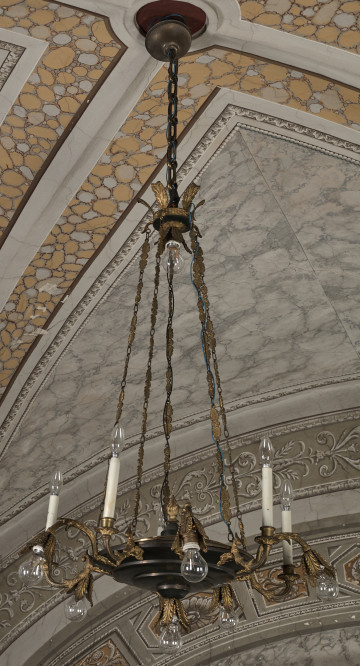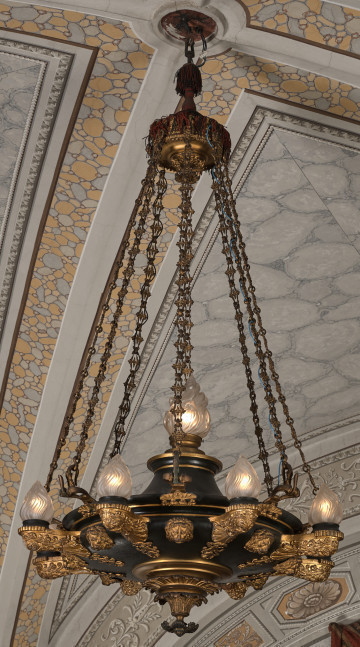
Kerosene lamp
19th / 20th century
Castle Museum in Łańcut
Part of the collection: Lampy, żyrandole i kinkiety
Hanging electrified lamp. Lamps were known, as light sources, already in antiquity, initially as olive lamps, with oil-based lamps known since the 16th century, and kerosene lamps invented in the 19th century. The discussed lamp is suspended above the billiards table in the library in the castle’s first floor, and stems from the end of the 19th century. The stem, as a baluster, turns into a thick chain at the top, and at the bottom – a stylish vase ending in a finial, decorated with gargoyles on the body. From two sides of the vase, there protrude two volute arms decorated with acanthus leaves, and bent downwards. The arms end with containers – historically for kerosene, but now they house light bulbs. In light bulbs, the light is emitted by a tungsten filament, heated by the flow of electric current. Despite the presently broad use of light bulbs, they are not as efficient a light source as one could believe, because only about 5% of the energy (current flow through the filament) is expelled as light, and 95% is emitted as heat. The light bulb containers are covered with semi-circular milky glass shades in celadon, embedded on metal rings. The glass lamp shades are finished at the top with stylish metal crowns.
Other names
Billiard lamp
Author / creator
Object type
Lamps, chandeliers and sconces
Technique
cast, mill forming
Material
bronze, porcelain
Origin / acquisition method
decyzja administracyjna
Creation time / dating
Creation / finding place
Owner
Castle Museum in Łańcut
Identification number
Location / status

19th / 20th century
Castle Museum in Łańcut

19th / 20th century
Castle Museum in Łańcut

20th century
Castle Museum in Łańcut
DISCOVER this TOPIC
National Museum in Lublin
DISCOVER this PATH
Educational path